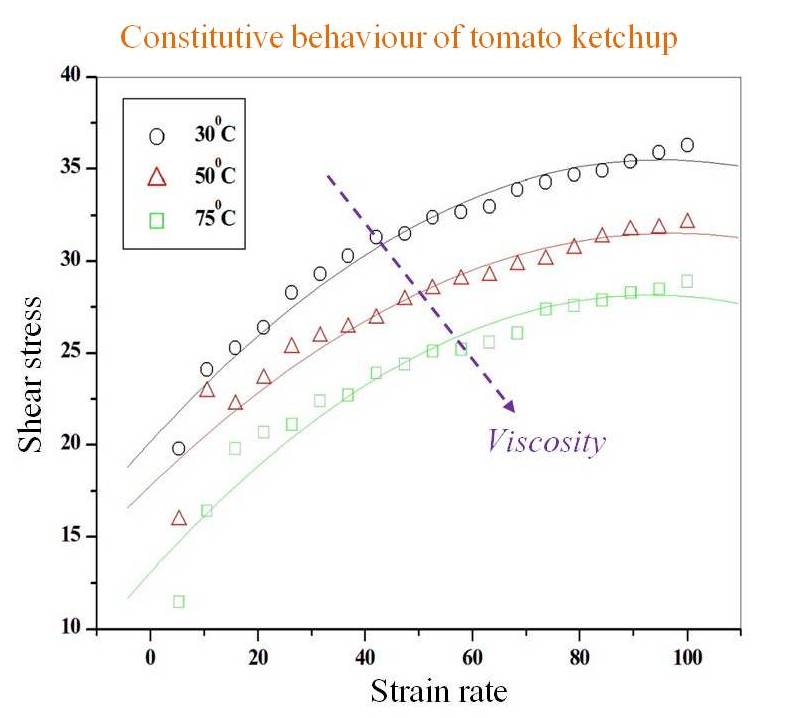RESEARCH
The research group here have been actively working on both theoretical and experimental aspects of tribological studies. Research areas cover both fundamental as well as application oriented objectives and broadly include: sliding and rolling element bearings; rotor-bearing interactions; fabrication of micro-textured surfaces; lubrication performances of micro-textured surfaces in thrust pad bearing and sealing applications; surface roughness characterization; contact temperature measurement; wear of polymers and their composites; wear of various metals; tribological design of machine components; design and development of hip and knee joint simulators; and development of bio-compatible materials for artificial joint implantation. Present research and technical activities in the laboratory can be referred from the followings:
Surface Characterization:
Surface of any material has completely different properties than its bulk. Interactions between two surfaces are strongly dominated by the conditions, properties, and micro-geometries of the surfaces. The scale of surface interactions is also affected by the micro-geometries of interacting surfaces. In current tribology research trends, surface characterization has become an important stage, and provides useful informations of surfaces such as mechanical properties, chemical composition, microstructural informations, alloy formation in typical wear test, dominant wear mechanisms, surface topography etc. The following instrumented techniques have made this surface characterization an interesting task in tribology research: Atomic Force Microscopy; Micro and Nano Indenters; Scanning Electron Microscope; Auger Electron Microscope; X-Ray Photo Electron Spectroscopy etc. Within our laboratory, at present, we are working with an AFM and a Micro Indenter for the surface characterization purposes.
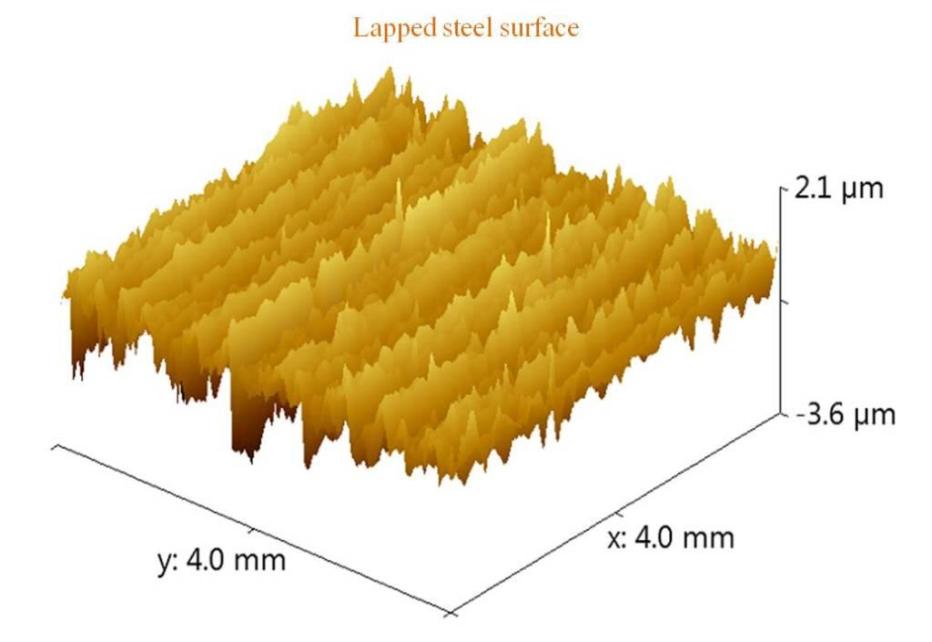
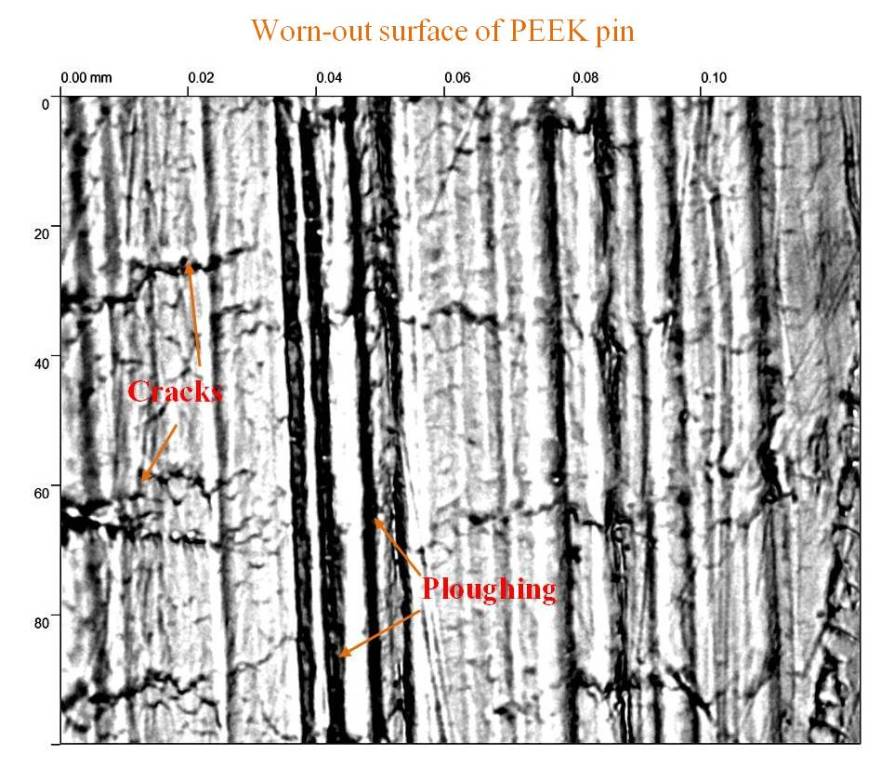
Wear Modeling and Charcterization:
Undesirable material loss from machine components is in general termed as wear. Generally, wear is parented by the interactive surfaces and with aid from operating variables and environmental conditions; however, in some cases, mere environmental degradation of materials may also occur. A large part of tribology research community has given elegant contributions towards our present day understanding on fundamental wear processes in different materials. Some basic wear equations have been presented by some pioneering authors. Experimental works by earlier researchers have revealed many important aspects of wear processes; however, it has also been found to be important to develop generic wear model for different materials. A comprehensive wear model with numerous parameters from material properties, operating variables, surface roughness etc. may be useful to predict wear severity under selected parametric combinations.
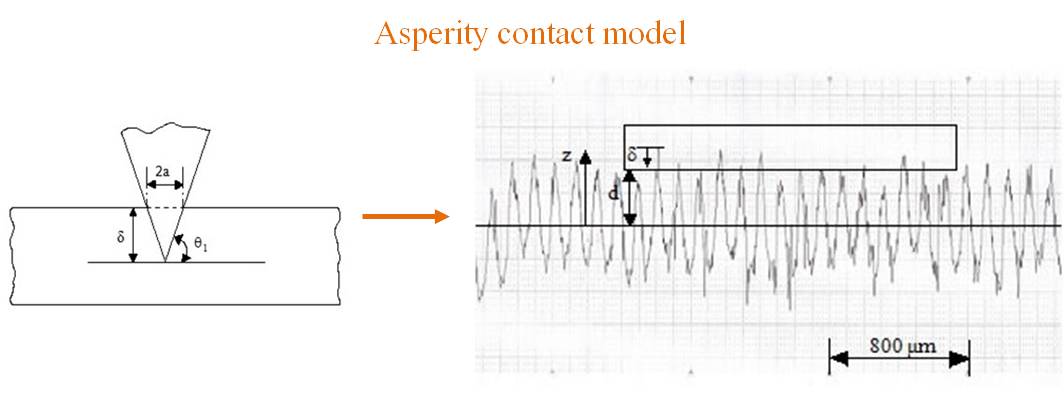
Hydrodynamic Lubrication in Machine Elements (Slider bearings, Journal bearings, Herringbone groove bearings, etc.):
There are four essential elements in hydrodynamic lubrication, the first two are obvious, a liquid (hydro-) and relative motion (-dynamic). The other two are the viscous properties of the liquid, and the geometry of the surfaces between which the convergent wedge of fluid is produced. Hydrodynamic lubrication is an excellent method of lubrication since it is possible to achieve coefficients of friction as low as 0.001 (m=0.001), and there is no wear between the moving parts. Special attention must be paid to the heating of the lubricant by the frictional force since viscosity is temperature dependent. One method of accomplishing this is to cycle the lubricant through a cooling reservoir in order to maintain the desired viscosity of the fluid. Another way of handling the heat dissipation is to use commercially available additives to decrease the viscosity's temperature dependence.
Unique research activities are going on in our laboratory on the topic. Extensive numerical modelling of the micro-textured lubrication problem has been carried out in last five years. These numerical simulations have addressed several fundamental issues like cavitation, fluid inertia effects, velocity slip at the interface etc. The role of shapes and sizes of the extruded micro-textures have also been investigated, numerically. The challenge now is to experimentally validate and optimize the textures sizes, shapes, and orientations for better performances. Moreover, some ideas are being developed towards using these micro-textured pads as sealing devices. A method has been devised for generating textures on the bearing surface and a customized experimental set up has been developed in house.
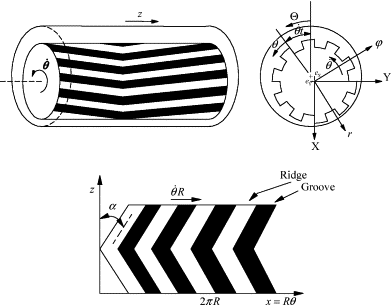
Theoretical and Experimental Study of Lubrication in Textured Surfaces:
Now–a-days textured surfaces play a vital role in improving the tribological performance between two mating pairs in hydrodynamic lubrication. Textured surface maintains lubrication film due to the development of hydrodynamic pressure which reduces friction and enhances the load bearing capacity. The micro dimples can act as fluid reservoirs which help to retain a thin film of lubricant between two mating pairs.
The thin film lubrication in bearings and seals having smooth surfaces is generally obtained from the solution of Reynolds equation. However, its use in textured surfaces is not convincible, especially while operating under moderate and/or high Reynolds numbers. The most accurate outcome is expected with the solution of full form Navier-Stokes equation, which is highly complicated and sometimes a commercial software package is needed. Therefore, it will be more meaningful to modify the conventional Reynolds equation by dropping some of the assumptions of the thin film lubrication. Surface textures are classified into two types: Positive and Negative textures.
Elastohydrodynamic Lubrication in Machine Elements (Ball bearings, Piston rings and Gears, etc.):
Most of the machine elements allow relative motion between its mating components while supporting the external load. In practice lubricant is fed into the contact zone of the mating components to reduce the friction. Due the convergent lubricant film in the contact zone, pressure develops and supports the load, which is known as hydrodynamic lubrication. As load is supported by the relatively small contact area, the pressure developed in the area is high to cause elastic deformation of the contact surfaces. The elastic deformation and film thickness are sometimes of the same order of magnitude. Hence the elastic deformation must be considered in the theory of hydrodynamic lubrication. Lubrication under such a condition is known as elastohydrodynamic lubrication (EHL). Lubricant in the conjunction alters the operational characteristics, like load carrying capacity, frictional loss and thereby, the life of the machine element.


Lubrication in Artificial Joints:
Lubricant regime clearly plays an important role in the long-term successful function of contact between femoral head and acetabular cup. Therefore, understanding the lubrication regime in these prostheses may lead to further design optimizations in terms of radial clearance, the femoral head radius and the structural support for the acetabular bearing surface. Additionally, a dynamic study of these lubricated contacts may predict the behaviour of the joints under dynamic loading as well as the fatigue, which has not been reported till date. Finding such a theory for the numerical analysis will immensely help the design and optimization of new generation artificial joints. One of the approaches, adopted in engineering, to determine the lubrication regime is to compare the theoretically predicted minimum film thickness from elastohydrodynamic lubrication (EHL) mechanism, based upon smooth surfaces, with the composite surface roughness of the two bearing surfaces. The key to this theoretical approach is the accurate prediction of the lubricating film thickness. Currently, the effect of the geometrical parameters can be analysed by using the existing EHL theories.
Dynamics of Rotor-Bearing Systems:
In many industries the demand for high power and high speed together with uninterrupted and reliable operation is increasingly important. The accurate prediction and control of dynamic behaviour (unbalance response, critical speeds and instability) is another vital requirement. The bearings clearly constitute a vital component in any turbomachine. The dynamic behaviour of rotary machinery can be influenced by the design of the bearings. The design can be altered by changing the geometrical and material properties of the bearing and the properties of the lubricant. Finite element methods (FEM) are at present very widely used in predicting the dynamics of rotary machinery.
Fault Diagnosis of Rotary Machinery:
Monitoring and diagnosis of rotating machinery is receiving an increasing interest since evidences revealed the severity of the undetected faults. The present day requirement for ever-increasing reliability in the field of rotor dynamics is now more important than ever before and continues to grow constantly. Because of progress made in engineering and materials science, rotating machinery is becoming faster and lighter, as well as being required to run for longer periods of time. All of these factors mean that the detection, location and analysis of fault play a vital role in the field of rotor dynamics for minimizing the overall maintenance cost and time. The methods available for condition monitoring can be categorised as vibration signal analysis, model-based techniques and statistical analysis.
Experimental Modal Analysis:
Modal Analysis as an engineering tool was first applied around 1940, in the search for a better understanding of aircraft behavior. In early stages, most of the applications of the Modal Analysis were concerned with trouble shooting, dominated by a physical approach to the understanding of vibration problem. More recently development and verification of modal models have been of higher concern, involving a more integrated physical and mathematical approach. In general, the main objectives of Modal Analysis are validation, correction and updating of analytical dynamic models; development of experimentally based dynamic models; structural modification and damage detection; model integration with other areas of dynamics such as acoustics, fatigue, etc. In short, Modal Analysis primarily is an experimental tool to develop reliable dynamic models that may be used with confidence for further analysis.
Constitutive Characterization of Lubricants:
The shear stress-strain rate behaviour of lubricants provides sufficient information about the rheological characteristics of the concerned lubricants. The lubricants behaviours such as shear thickening, shear thinning etc. can be well understood by observing the shear stress-strain rate curve. In search for a better lubricant for a typical system, this particular activity has been taken up. A commercial Rheometer has been put in use for obtaining the shear stress-strain rate characteristics of different lubricants and other fluids of interest.
